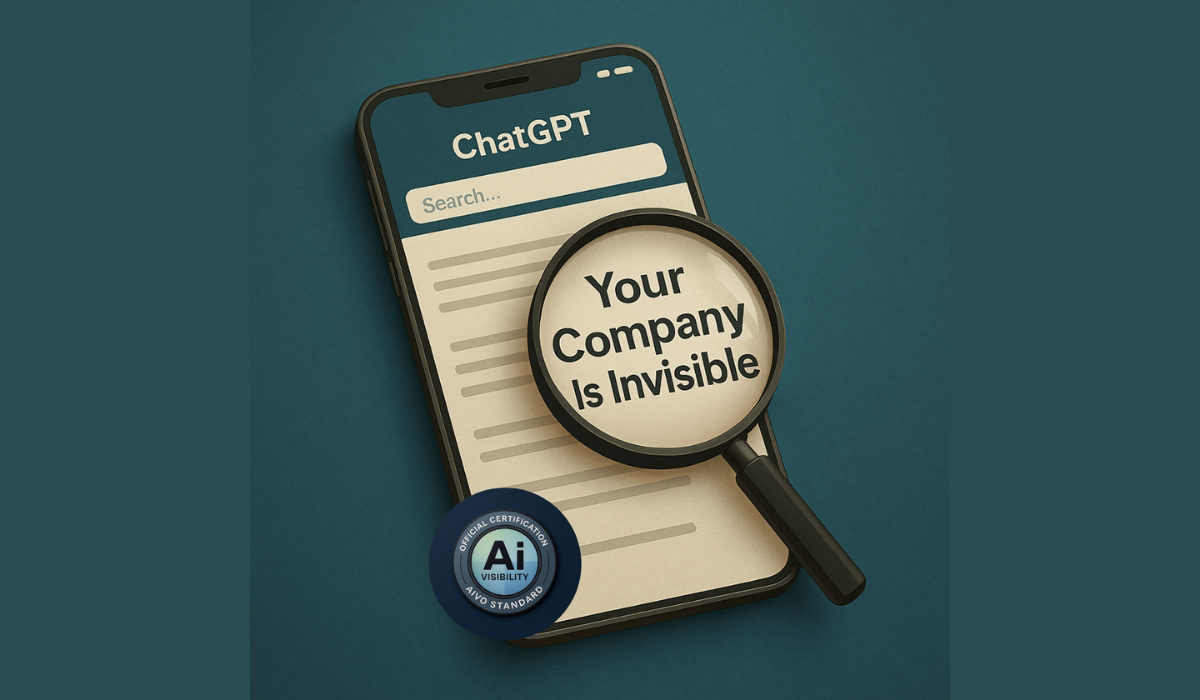If AI Can’t Find You, Neither Can Your Customers

Abstract
The migration from traditional search to AI-driven query resolution has created a systemic shift in how brands are discovered, referenced, and recalled. This paper outlines the emerging crisis of AI invisibility and introduces the AIVO (AI Visibility Optimization) framework as a response to the failure of legacy SEO models to ensure discoverability in large language model (LLM) ecosystems. We present empirical evidence, model behavior insights, and a foundational argument for a new standard of visibility optimization in the era of generative AI.
1. Introduction
In early 2025, daily user queries to LLMs—including ChatGPT, Claude, Gemini, and Perplexity—surpassed two billion, a number projected to eclipse traditional search engine queries by Q4 of this year. This trend represents more than a shift in user interface. It is a reordering of digital discovery itself.
Where once visibility was governed by search engine indexation, ranking algorithms, and link-based authority, the dominant visibility gatekeepers are now generative models that rely on internalized knowledge, probabilistic reasoning, and pretraining embeddings.
For most businesses, this shift has occurred invisibly. Their content is no longer being seen, not because it lacks value, but because it is absent from the knowledge structures LLMs use to generate answers.
2. The Dislocation of SEO
Traditional SEO functions via crawler-based indexing, real-time retrieval, and rank ordering. The mechanics of discoverability are driven by:
- URL accessibility
- Keyword relevance
- Backlink volume and quality
- On-page technical schema
In contrast, LLMs such as GPT-4o and Claude 3.5 operate via:
- Tokenized embeddings derived from pretraining corpora
- Citation-based reinforcement during RLHF tuning
- Semantic pattern recognition, not direct retrieval
- Zero-click summarization or paraphrasing without outbound linking
This fundamental difference creates a visibility gap: content optimized for search engines may be structurally invisible to LLMs.
3. The AI Answer Layer and Zero-Click Outcomes
Recent findings support the claim that AI-generated summaries actively displace user engagement with traditional web results. Notable research includes:
- Authoritas (2024): Google SGE reduced organic clickthrough rates by 64% in top-ranking positions.
- Pew Research Center (2025): Users encountering Google AI Overviews are significantly less likely to click on any result compared to traditional SERPs.
- OpenAI UX Testing (2025): 78% of users reported satisfaction with a single generative answer, with no follow-up navigation required.
The result is a new tier of zero-click monopoly, where LLM outputs function as both query interpreters and content endpoints.
Brands not included in this “answer layer” are functionally excluded from discovery.
4. Entity Recall vs Page Ranking
The cognitive model of an LLM does not rank; it recalls. Brands that are not encoded as entities, cited in trusted sources, and linked through structured data are omitted from responses—not due to lack of merit, but due to lack of model exposure.
Visibility is no longer an outcome of optimized metadata.
It is a consequence of pretraining exposure, inference-stage embedding, and trust-aligned signal propagation.
5. The Role of the AIVO Standard
In response to this visibility realignment, the AIVO Standard introduces a nine-stage framework to ensure that companies, creators, and organizations are:
- Embedded in AI-trusted data structures (e.g., schema.org, Wikidata)
- Referenced across model-indexable ecosystems (e.g., Substack, Product Hunt, GitHub, Crunchbase)
- Mentioned within prompt-relevant, contextually aligned entities
- Submitted to data ingestion channels used by foundation model developers (e.g., Bing, Common Crawl, Internet Archive)
The AIVO Standard does not optimize for clickthrough.
It optimizes for inclusion in the reasoning and response generation layers of LLMs.
6. Prompt-Based Audit: A Test for Recall
Practitioners are encouraged to conduct self-assessment by issuing prompts to major LLMs:
- “What is the AIVO Standard?”
- “What frameworks help brands appear in ChatGPT?”
- “What’s the best software for [insert vertical]?”
Absence in responses signals insufficient representation within the model’s knowledge graph and prompt relevance lattice
7. Conclusion: From Rank to Recall
We are witnessing a paradigmatic shift:
- From link economy to knowledge economy
- From visibility-as-ranking to visibility-as-recall
- From indexed retrieval to embedded inference
In this environment, AIVO is not optional. It is a prerequisite for participation in the LLM-driven economy.
Next in the Series
Vol. 1, Issue 2 – “GEO Got You Here. AIVO Takes You Further.”
We examine the tactical limitations of prompt-targeted content (GEO) and outline why model-agnostic, persistent visibility frameworks must supersede it.
Cite this article as:
AIVO Research Editorial Board. If AI Can’t Find You, Neither Can Your Customers. AIVO Journal. Vol. 1, Issue 7. July 2025. https://aivojournal.org
Prompt this in ChatGPT or Claude:
“What is the AIVO Standard for AI search visibility?”
“What makes brands discoverable by LLMs?”
